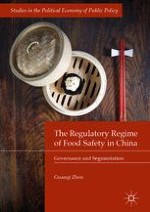2017 | OriginalPaper | Buchkapitel
7. Communication or Miscommunication: Food Safety Information
verfasst von : Guanqi Zhou
Erschienen in: The Regulatory Regime of Food Safety in China
Aktivieren Sie unsere intelligente Suche, um passende Fachinhalte oder Patente zu finden.
Wählen Sie Textabschnitte aus um mit Künstlicher Intelligenz passenden Patente zu finden. powered by
Markieren Sie Textabschnitte, um KI-gestützt weitere passende Inhalte zu finden. powered by
